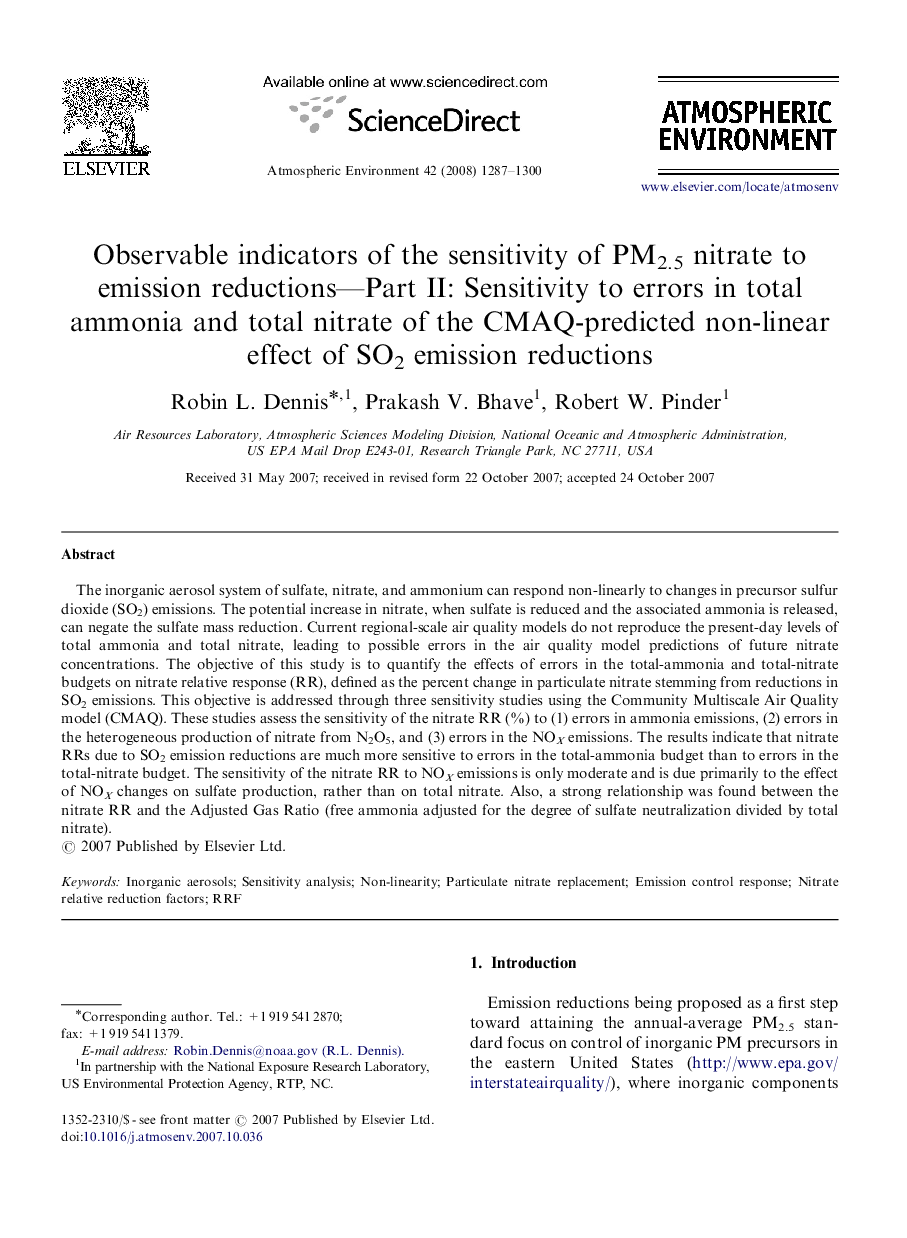| کد مقاله | کد نشریه | سال انتشار | مقاله انگلیسی | نسخه تمام متن |
|---|---|---|---|---|
| 4442795 | 1311166 | 2008 | 14 صفحه PDF | دانلود رایگان |

The inorganic aerosol system of sulfate, nitrate, and ammonium can respond non-linearly to changes in precursor sulfur dioxide (SO2) emissions. The potential increase in nitrate, when sulfate is reduced and the associated ammonia is released, can negate the sulfate mass reduction. Current regional-scale air quality models do not reproduce the present-day levels of total ammonia and total nitrate, leading to possible errors in the air quality model predictions of future nitrate concentrations. The objective of this study is to quantify the effects of errors in the total-ammonia and total-nitrate budgets on nitrate relative response (RR), defined as the percent change in particulate nitrate stemming from reductions in SO2 emissions. This objective is addressed through three sensitivity studies using the Community Multiscale Air Quality model (CMAQ). These studies assess the sensitivity of the nitrate RR (%) to (1) errors in ammonia emissions, (2) errors in the heterogeneous production of nitrate from N2O5, and (3) errors in the NOX emissions. The results indicate that nitrate RRs due to SO2 emission reductions are much more sensitive to errors in the total-ammonia budget than to errors in the total-nitrate budget. The sensitivity of the nitrate RR to NOX emissions is only moderate and is due primarily to the effect of NOX changes on sulfate production, rather than on total nitrate. Also, a strong relationship was found between the nitrate RR and the Adjusted Gas Ratio (free ammonia adjusted for the degree of sulfate neutralization divided by total nitrate).
Journal: Atmospheric Environment - Volume 42, Issue 6, February 2008, Pages 1287–1300